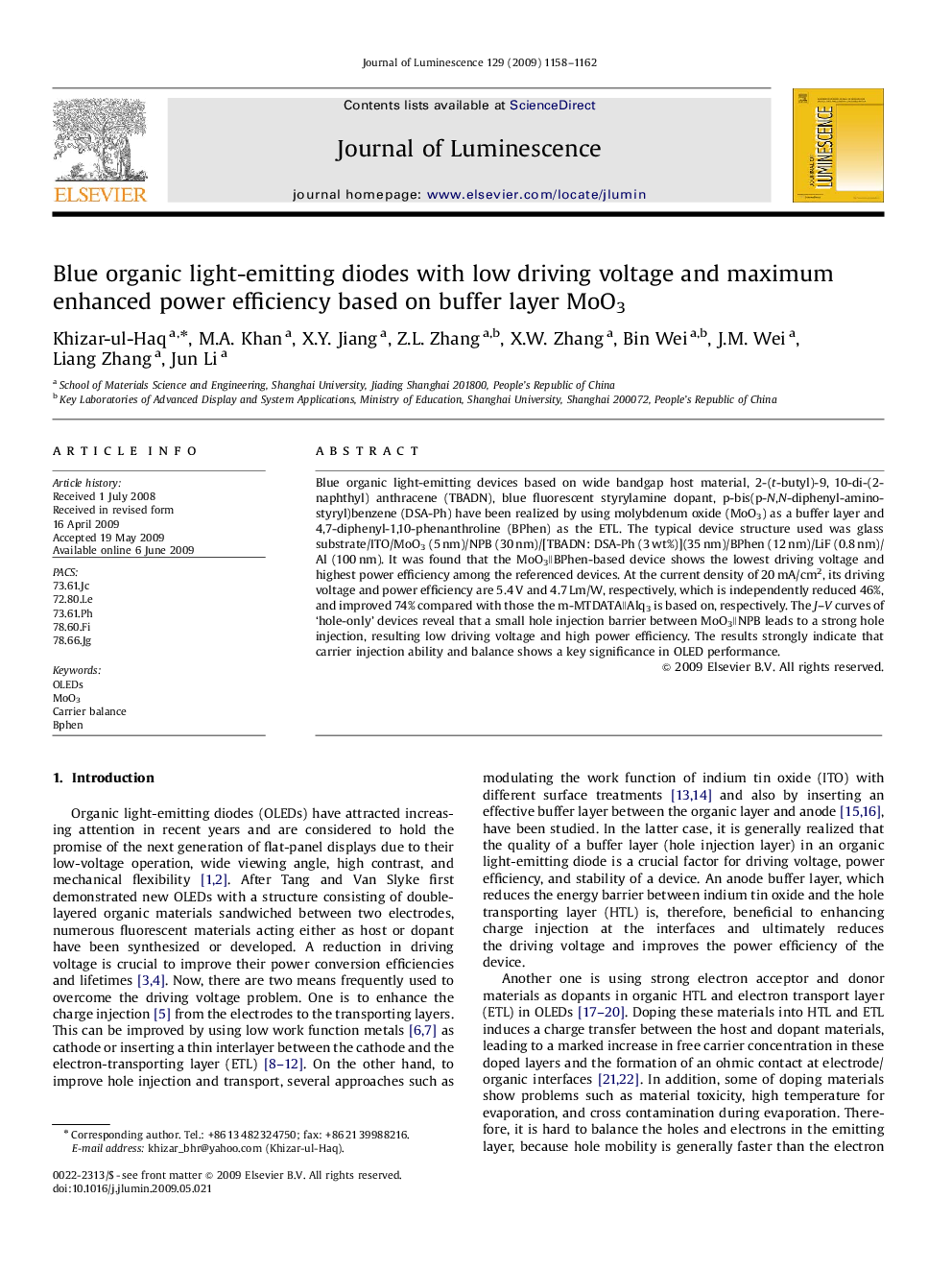| Article ID | Journal | Published Year | Pages | File Type |
|---|---|---|---|---|
| 5402963 | Journal of Luminescence | 2009 | 5 Pages |
Abstract
Blue organic light-emitting devices based on wide bandgap host material, 2-(t-butyl)-9, 10-di-(2-naphthyl) anthracene (TBADN), blue fluorescent styrylamine dopant, p-bis(p-N,N-diphenyl-amino-styryl)benzene (DSA-Ph) have been realized by using molybdenum oxide (MoO3) as a buffer layer and 4,7-diphenyl-1,10-phenanthroline (BPhen) as the ETL. The typical device structure used was glass substrate/ITO/MoO3 (5 nm)/NPB (30 nm)/[TBADN: DSA-Ph (3 wt%)](35 nm)/BPhen (12 nm)/LiF (0.8 nm)/Al (100 nm). It was found that the MoO3â¥BPhen-based device shows the lowest driving voltage and highest power efficiency among the referenced devices. At the current density of 20 mA/cm2, its driving voltage and power efficiency are 5.4 V and 4.7 Lm/W, respectively, which is independently reduced 46%, and improved 74% compared with those the m-MTDATAâ¥Alq3 is based on, respectively. The J-V curves of 'hole-only' devices reveal that a small hole injection barrier between MoO3â¥NPB leads to a strong hole injection, resulting low driving voltage and high power efficiency. The results strongly indicate that carrier injection ability and balance shows a key significance in OLED performance.
Related Topics
Physical Sciences and Engineering
Chemistry
Physical and Theoretical Chemistry
Authors
Khizar-ul-Haq Khizar-ul-Haq, M.A. Khan, X.Y. Jiang, Z.L. Zhang, X.W. Zhang, Bin Wei, J.M. Wei, Liang Zhang, Jun Li,
